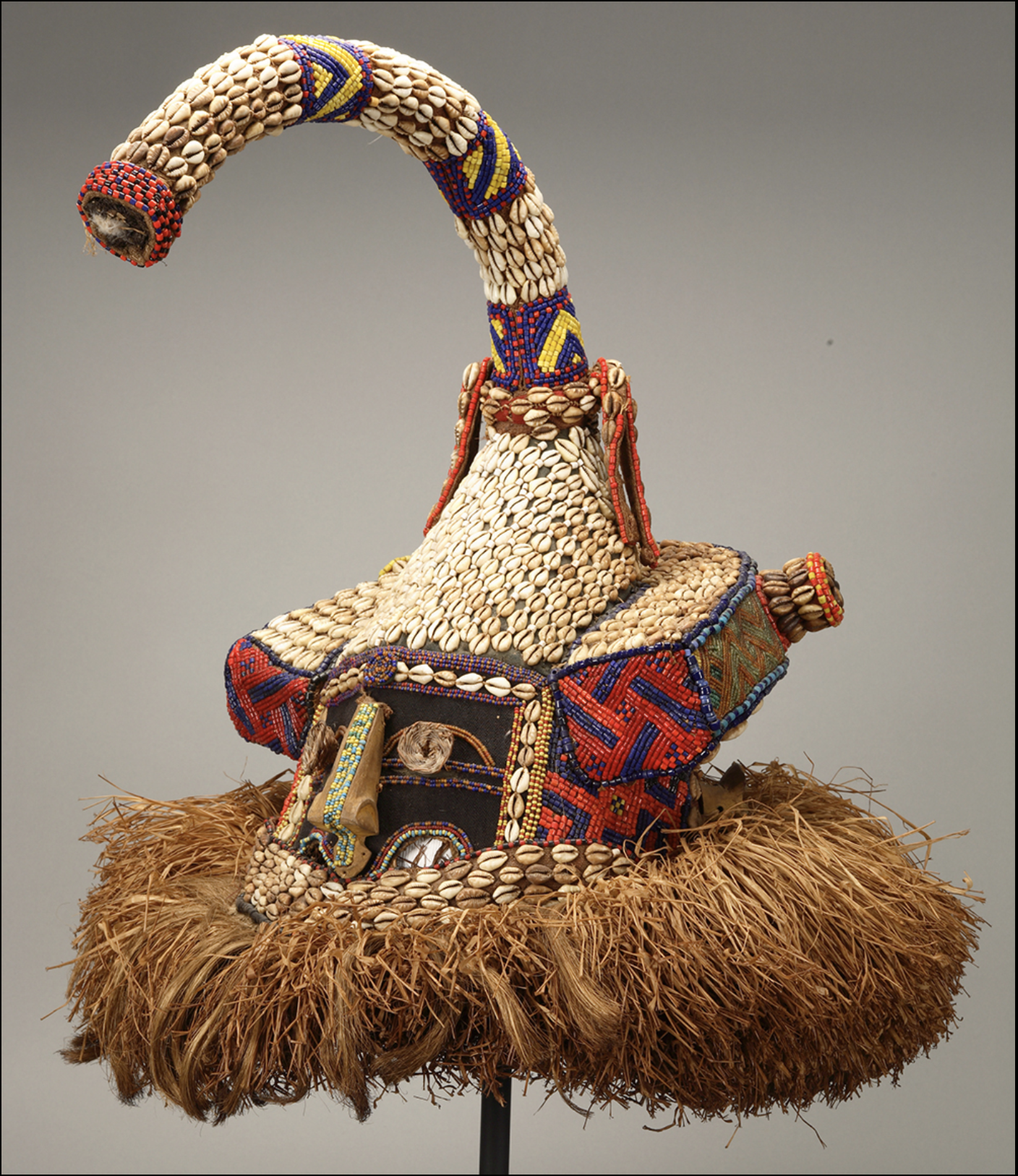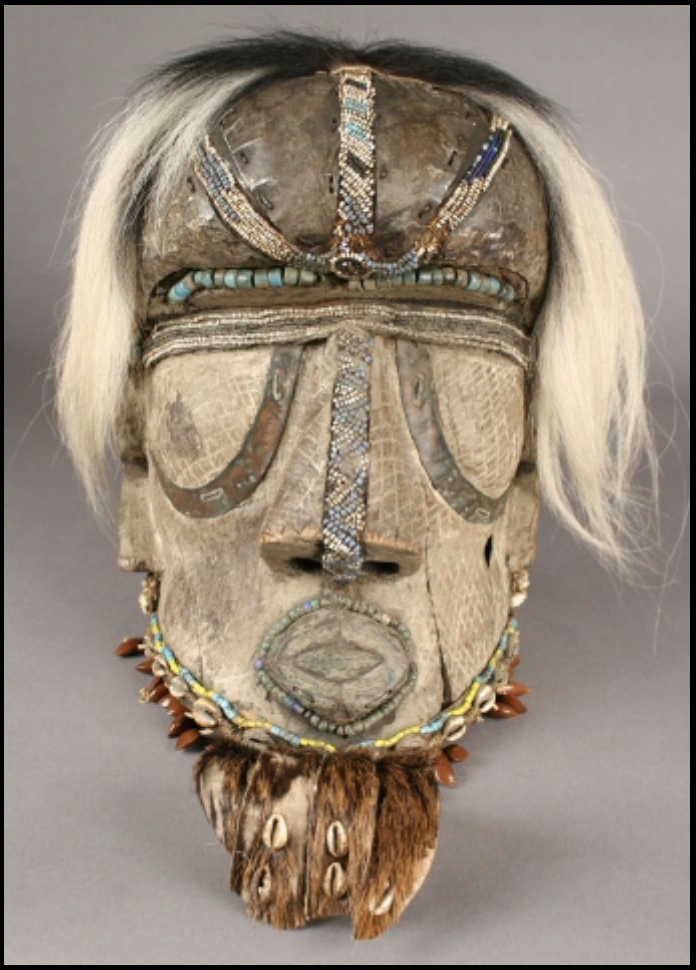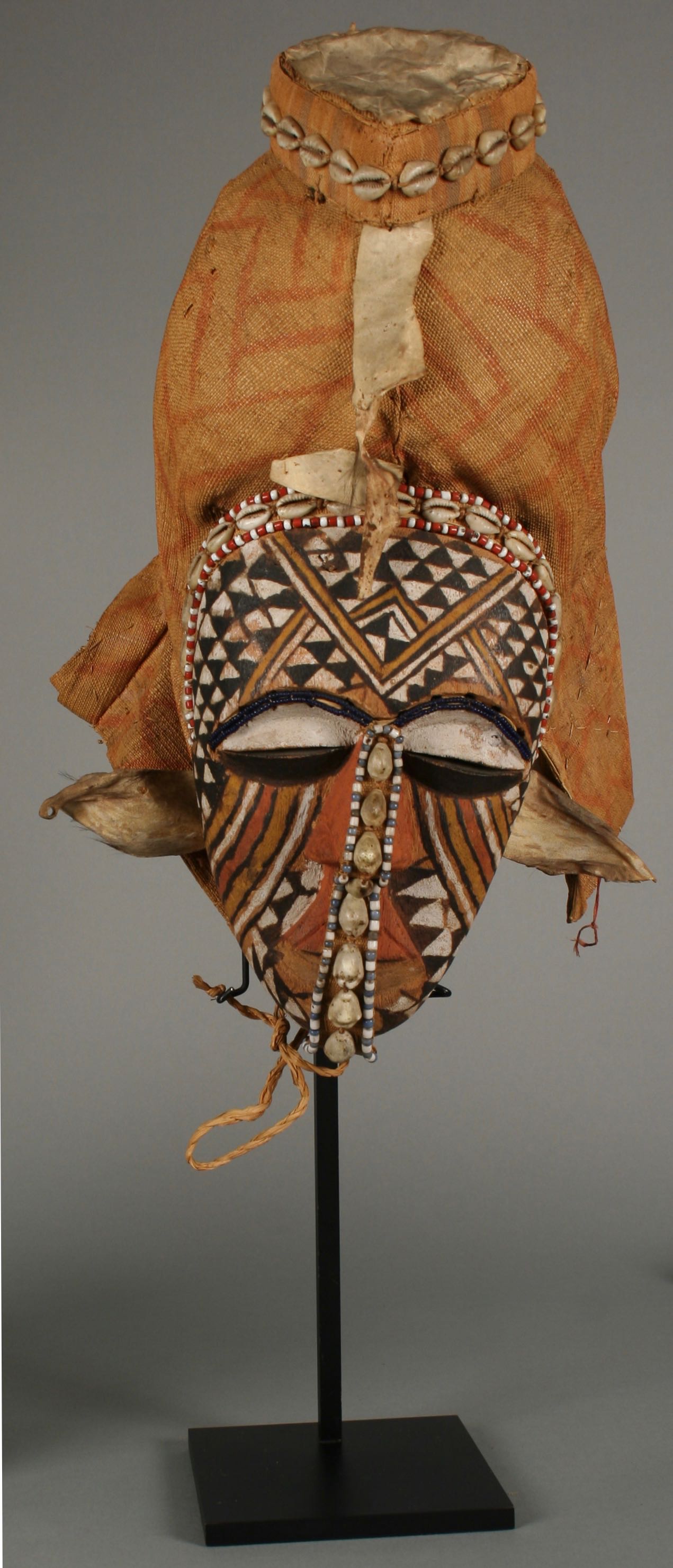Jody Andes, UMFA Docent
As a UMFA docent, I love the drama of the Kuba Royal Mask complex. These are three masks which give us insight into the values of the Kuba people as well as serving as beautiful examples of Kuba artistic skill and creativity. In addition, the Kuba creation story (which follows) is such fun to explore with both children and adults.
The Kuba kingdom existed from the fifteenth century to the nineteenth centuries in present day Democratic Republic of the Congo (formerly Zaire). It is presently a conglomeration of nineteen ethnic groups loosely joined by a common monarchy. Royal complex masks are made for male initiation ceremonies. They are also used for funerals.
The Kuba people live along the Congo River. They are mostly farmers and fishermen. The Kuba are known for their raffia embroidered textiles, fiber and beaded hats, carved palm wine cups and cosmetic boxes. But they are most famous for their monumental helmet masks featuring exquisite geometric patterns, stunning fabrics, seeds, beads, and shells. They have been described as a people who cannot bear to leave a surface without ornament.
The UMFA’s stunning Royal Mask Complex is a collection of three masks that depict the main characters in the Kuba creation story.
Kuba Creation Myth (adapted)
In the beginning there was only darkness, water, and the great god Bumba. One day Bumba, in pain from a stomach ache, vomited up the sun. The sun dried up some of the water, leaving land. Still in pain, Bumba vomited up the moon, the stars, and then some animals: the leopard, the crocodile, the turtle, and, finally, some men.
After creating the world, the great god sent his sons Woot and Bwoom with their sister Mweel to bring culture to the Kuba people. Woot was a wise and thoughtful ruler who brought government to the people and taught them arts and crafts. Woot became leader of the Kuba and married his beautiful sister Mweel.
Woot’s brother, Bwoom, was very rude and ill-mannered, as well as being aggressive and jealous of his older brother. In an epic battle, Bwoom and Woot fought for the love of Mweel and the right to the throne.
Woot: Only designates of the king can wear the Woot mask since Woot is the mythical descendent of the first king. The mask is topped with an elephant trunk since the elephant is a royal emblem. Two beaded strips represent the tusks. White fur below the chin represents the wisdom the ruler gains with age and experience. The Kuba use geometric patterns and love to fill up all the spaces. The Woot mask is decorated with cowrie shells (which were once used as currency), leopard skin, and beads. Red beads denote good fortune, blue beads signify high rank, and white beads symbolize purity and faithfulness.

Bwoom represents the brutishness and commonness of this character. Bwoom is aggressive and boorish. Copper strips call attention to maleness.

Unidentified artist, Democratic Republic of the Congo, Kuba kingdom, Bwoom Mask, 20th century, wood, beads, raffia and copper, partial gift of Owen D. Mort, Jr. for the Owen D. Mort, Jr. Collection of African Art, with additional funds from the George S. and Dolores Doré Eccles Foundation Museum, UMFA1985.053.004.
Mweel is the ideal, beautiful woman. Diamond patterns emphasize her smooth brow; white and black triangles represent hearth and home; lines on cheeks represent tears because of the pain women must bear and also because these are funerary masks.

Foundation, UMFA2006.31.1.
